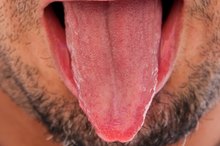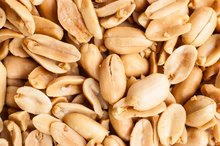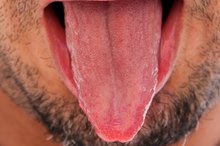What does fact checked mean?
At Healthfully, we strive to deliver objective content that is accurate and up-to-date. Our team periodically reviews articles in order to ensure content quality. The sources cited below consist of evidence from peer-reviewed journals, prominent medical organizations, academic associations, and government data.
The information contained on this site is for informational purposes only, and should not be used as a substitute for the advice of a professional health care provider. Please check with the appropriate physician regarding health questions and concerns. Although we strive to deliver accurate and up-to-date information, no guarantee to that effect is made.
Causes of Tongue Blisters
Tongue blisters, small bumps that often turn into ulcers, can be caused by viruses, trauma or allergy. Blisters on the tongue can cause pain and interfere with eating and drinking. Most tongue blisters last only a short time, heal without treatment and cause no permanent problems, but can be very uncomfortable while they last.
Canker Sores
Canker sores, small painful bumps that ulcerate, can occur on the tongue 1. They usually appear singly, but sometimes show up in clusters. Canker sores, most often caused by a virus, occur more frequently in women than men and often run in families, the University of Maryland Medical Center states 1. Injury to the mouth, stress, vitamin deficiencies and food allergies can cause canker sores.They appear yellow or white surrounded by a reddened area, and can take 1 to 3 weeks to heal 1. **Canker sores heal on their own, but treatments may decrease discomfort 1. Mixing hydrogen peroxide and water in equal amounts and dabbing the mixture on the sore, followed by dabs of milk of magnesia can help. Mixing milk of magnesia and liquid Benadryl in equal parts and swishing it in the mouth for 1 minute, then spitting it out, also relieves pain.
Hand-Foot-and Mouth-Disease
How to Heal Tongue Sores
Learn More
Hand-foot-and-mouth disease is a viral infection that often occurs in children, but can also affect adults. Hand-foot-and-mouth disease starts with small blisters in the mouth, including on the tongue, followed by fever, 1 to 2 days later. A rash appears, mostly on the hands and feet, 1 to 2 days later. The tongue and mouth blisters, which may ulcerate, may occur with or without the skin rash. Several different viruses can cause hand-foot-and-mouth disease. Treatment aims to reduce pain with mouthwashes and sprays that numb the areas, and pain relievers. Dehydration can occur due to the inability to drink due to pain, the Centers for Disease Control and Prevention states 2.
- Hand-foot-and-mouth disease is a viral infection that often occurs in children, but can also affect adults.
- Hand-foot-and-mouth disease starts with small blisters in the mouth, including on the tongue, followed by fever, 1 to 2 days later.
Mucocele
Mucoceles are small bumps or blister-like lesions that can develop on the underside of the tongue. Mucoceles may be caused by damage to the tube that carries saliva to the mouth from the salivary gland, NetWellness explains. Saliva escapes into the tissues in the mouth rather than into the mouth itself, creating a blister. A minor surgical procedure removes the gland and the saliva in the tissue.
- Mucoceles are small bumps or blister-like lesions that can develop on the underside of the tongue.
- Mucoceles may be caused by damage to the tube that carries saliva to the mouth from the salivary gland, NetWellness explains.
Stomatitis
Herpangina in Adults
Learn More
Stomatitis, a herpes viral infection that mainly affects children, causes blisters in the mouth, including on the tongue, that ulcerate. Pain from the blisters causes difficulty swallowing, trouble eating and drooling. Fever up to 104 degrees Fahrenheit may occur 1 to 2 days before the blisters appear. Antiviral medications help treat the infection, states MedlinePlus, and medications to decrease pain help keep the sick child hydrated.
- Stomatitis, a herpes viral infection that mainly affects children, causes blisters in the mouth, including on the tongue, that ulcerate.
- Antiviral medications help treat the infection, states MedlinePlus, and medications to decrease pain help keep the sick child hydrated.
Related Articles
References
- Canker sores. (2017).
- Centers for Disease Control and Prevention. (2017). Syphilis [Fact sheet].
- Dyall-Smith D. (2010). Transient lingual papillitis.
- Reamy BV, et al. (2010). Common tongue conditions in primary care.
- Scarlet fever: A group A streptococcal infection. (2017).
- Tongue cancer. (n.d.).
- Lip and tongue disorders. (n.d.).
Writer Bio
A registered nurse with more than 25 years of experience in oncology, labor/delivery, neonatal intensive care, infertility and ophthalmology, Sharon Perkins has also coauthored and edited numerous health books for the Wiley "Dummies" series. Perkins also has extensive experience working in home health with medically fragile pediatric patients.








